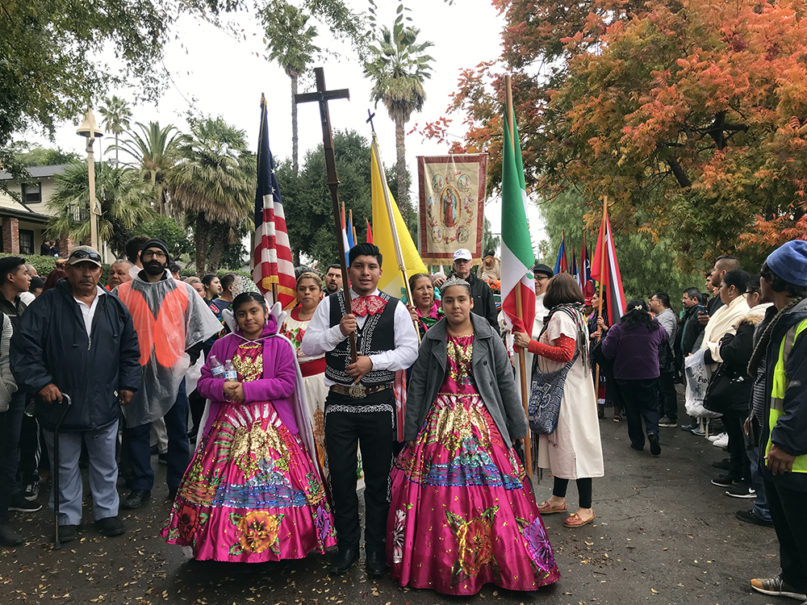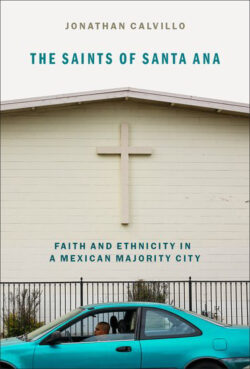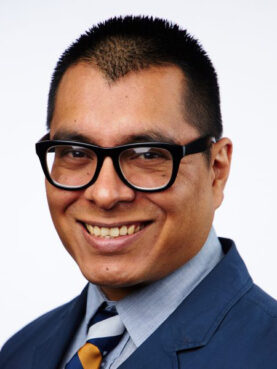(RNS) — By any definition of the term, Jonathan Calvillo, a Mexican American raised in Pentecostal churches, is an evangelical Christian. But when discussing his faith, Calvillo will often simply describe himself as Protestant, or say he’s from a Pentecostal background. Other times, he’ll use the Spanish word evangelico.
“Evangelical,” said Calvillo, a sociology of religion professor at Boston University, is too much tainted with upholding “whiteness” as a standard of success and, lately, presumes support for former President Donald Trump.
Complicating Calvillo’s faith identity is Latinos’ traditional association with Catholicism. Calvillo has often asked himself: “What does it mean to be Mexican American and how has faith shaped my sense of who I am?”
RELATED: Latino Protestants more conservative, supportive of Trump than Latino Catholics, poll finds
Calvillo explores these nuances in “The Saints of Santa Ana,” a book set in the Southern California city whose residents are nearly 80% Latino, many of Mexican heritage. Calvillo, who lived in Santa Ana and its surrounding Orange County, conducted in-depth interviews with 50 churchgoing Santa Ana residents, divided evenly between Catholicism and evangelicalism, all working-class Mexican immigrants.
- “The Saints of Santa Ana: Faith and Ethnicity in a Mexican Majority City” by Jonathan E. Calvillo. Courtesy image
- Jonathan Calvillo. Photo courtesy of Boston University
The Latinos in Santa Ana can often get overlooked in the religious landscape of Orange County, which is home to the state’s two largest congregations, the nondenominational Mariners Church in Irvine and Rick Warren’s Southern Baptist Saddleback Church in Lake Forest.
The Catholic Diocese of Orange, meanwhile, with more than a million followers, many of them Latinos or Vietnamese immigrants, has been described as the “Catholic Church’s future.”
But Calvillo writes in “The Saints of Santa Ana” that the city “has emerged as a vibrant religious ecology in its own right.”
In his field work, Calvillo asked his subjects whether they identified as Mexican, Mexican American, Latino, Hispanic or American and what labels — Catholic, Christian, Baptist, Pentecostal — best described their faith. They talked about how faith influences relationships with their families and their experiences in the neighborhoods where they live.
“What do you think is more important, that people identify you because of your faith, or that people identify you because of your ethnicity?” Calvillo also asked.
Calvillo found that Catholics more confidently declared their identities as Mexicans compared with the evangelical Christians he interviewed. Of course they were Mexican, the Catholic parishioners said; their reverence for the Virgin of Guadalupe — the patron saint of Mexico — was proof.
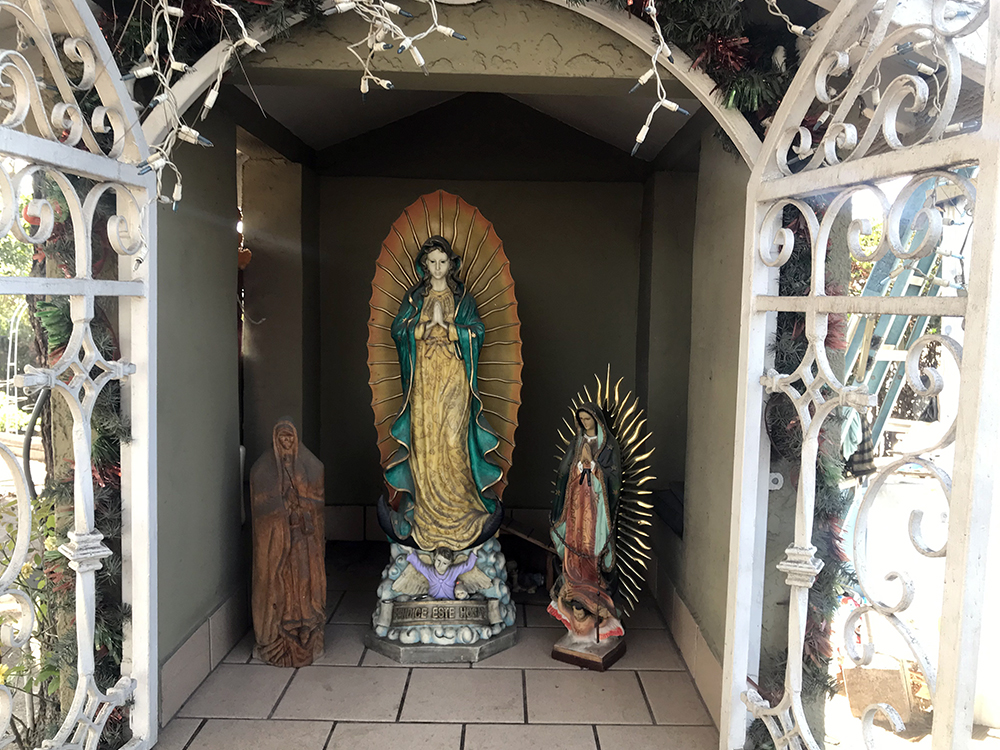
A shrine to the Virgin Mary in Pomona, California, on Nov. 7, 2019. RNS photo by Alejandra Molina
In his book, Calvillo featured a conversation with a landscaper who prominently displayed a Virgin of Guadalupe statue in his front yard. “I don’t really see how someone can be really Mexican and not be Guadalupano,” he told Calvillo.
“Being devoted to La Virgen was a duty not only to the Catholic church at large, but also to his ethnic group,” Calvillo wrote.
RELATED: As he walks neighborhoods, candidate documents his city’s Virgin Mary shrines
Meanwhile, evangelicals told Calvillo that they often felt like they had to prove themselves to be Mexican.
Carmen Gomez — names of the people featured in the book have been changed for privacy reasons — said her social life centered on her Pentecostal church, where she interacted with families from Nicaragua, El Salvador and Honduras. Gomez, a preschool teacher, believes people at work consider her evangelical identity and her marriage to a Salvadoran man as signals that she is not Mexican, “or perhaps not Mexican enough.”
Calvillo also found that Catholics and evangelicals viewed their neighborhoods differently.
Catholic parishioners often have a strong sense of community and are conscious of how justice and equity issues affect their neighbors, Calvillo said. Their celebrations of sacraments and feast days were neighborhood affairs, and there was a sense of solidarity that people got from religious participation.
“Whether that articulated a very strong theology of social justice or whether they were merely invested in their neighborhoods, there was this sense of working toward the common good,” Calvillo said.
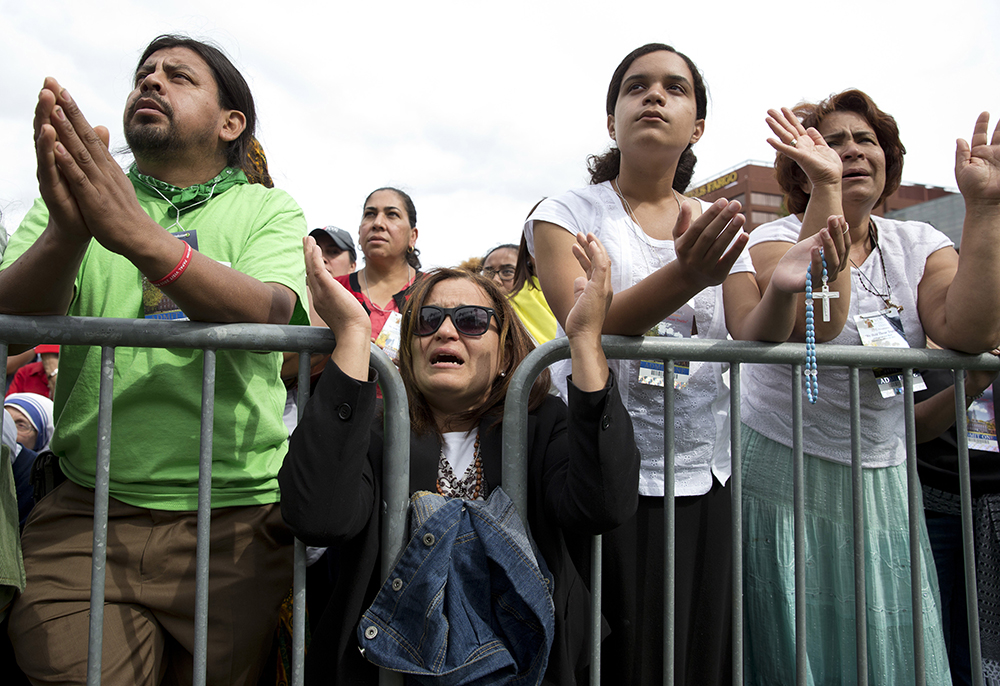
Milagros Orengo, second from left; her daughter Emily Orengo; and Maria Santos, right, all from Egg Harbor, New Jersey, pray behind a barricade at Independence Mall in Philadelphia, as a Mass with Pope Francis at the Cathedral Basilica of Sts. Peter and Paul is projected on a large screen, Sept. 26, 2015. (AP Photo/Carolyn Kaster)
Catholics like Juanita Vargas, profiled in “The Saints of Santa Ana,” were quick to defend their working-class neighborhoods, which outsiders may often view as plagued by gang violence and drug dealers. Vargas, who worked as a nurse in Mexico, believed that moving to a higher-income community would bring more risks to her family by forcing them to live above their means.
Calvillo said evangelicals have a “very strong sense of mercy and compassion,” but often for them it’s “rooted in these acts of evangelism and conversion.” There’s a lot more emphasis on the personal relationship with God, he said.
Calvillo writes about Patricia Martinez, a Pentecostal who sees herself as “being the light,” who disapproves of her neighborhood parties and drinking in what is considered gang territory but believes that, through her example, her neighbors will change. Another man Calvillo interviewed carries a Bible to offer gang members an example to follow, Calvillo wrote.
RELATED: Study finds US Latinos are no longer majority-Catholic. Here are some reasons why.
Calvillo recognizes the pushback against Latino evangelicals appearing as less authentically Latino and more self-reliant, but he pointed out that Latino evangelicals are “engaged in good works and a lot of them are compassionate people” who volunteer at the church or help feed the homeless.
But the difference is real, as is Calvillo’s own struggle with what to call his faith.
